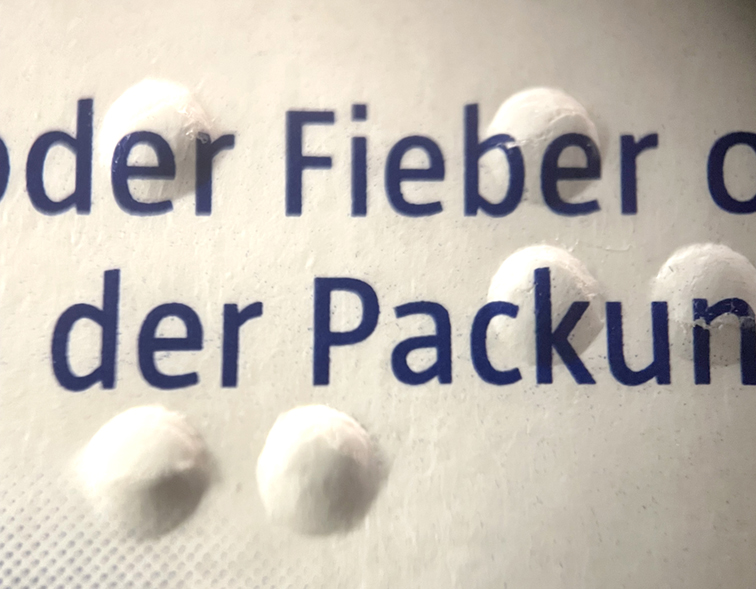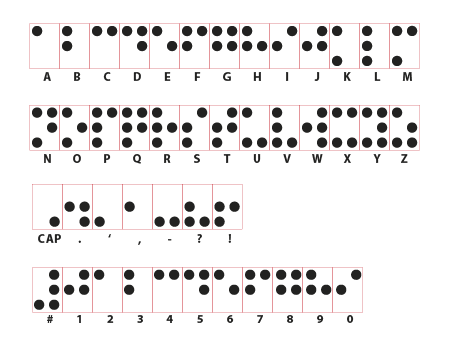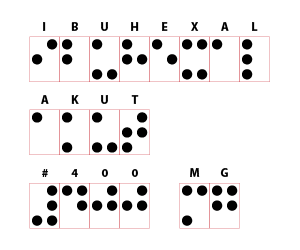

I walked into the local Apotheke this afternoon to buy a couple of over-the-counter medicines. Both were easy to find. I paid at the cashier’s counter and turned down an offer for a bag to carry the two small packages.
I put one in the pocket of my jacket, and gave the other to my wife. And, a few minutes later I put my hand in my pocket to discover a small box there (surprise!). I felt it, and remembered the trip to the apothecary, just a few minutes earlier.
But, what I also felt was Braille printing on the package (Blindenschrift in German).

I occasionally notice Braille in Munich. When I put my hand on a public transport handrail – bannisters and other hand-holds – the name of the station I am entering is often presented there in Braille. These labels, embossed on a strip of stainless steel, are affixed at the very top of bannister rails, and you touch them when you grip the railing. There is no mistaking them for a rough patch on the rail. It’s clearly a message.
This was my first time finding Braille on a package, and I am impressed.

The European Union enacted legislation in 2009 to require all member nations to put tactile labels on most pharmaceuticals, many soap and hygiene products, and chemicals like bleach. Most producers began to include Braille the following year.
In the U.S. the advisory committee that makes similar regulations decided that the decision to put Braille on packaging would be left up to the manufacturers, so there is no consistent application of this in the U.S.
The idea, of course, is to provide tactile printing for those in our society who cannot see printed labels. Stop to consider that over seven million men and women in the U.S. were known to the National Federation for the Blind in 2016. That is about 0.02 percent of the U.S. population. There are very likely many more.
So when it comes to pharmaceutical safety, and the broader need to label dangerous products, the presence of Braille on packaging can save lives.
Printing a package with ink is one thing. Embossing the same package with Braille is slightly more complicated. Ironically, it’s not much more complicated, considering that virtually every package (paper) is die-cut and then glued into a carton. Adding Braille while die-cutting is a moderately complex additional task. I am sure that it requires a second impression in many cases. But since the package is already being cut, it can be embossed in the same plant on the same machines at a small cost.
Plastic packaging is slightly more complicated. Centrifugal plastic molding machines – those used for soap bottles and similar items, could add Braille easily to the die (I know that these dies are very costly to make). Overall, the cost of adding Braille to packages is a few cents per unit. It would not break the pharmaceutical industry or the home cleaning products industry to add it. And, it could save visually impaired people the risk of injury from not being able to identify the pills in a bottle or the liquid they need to use in the washing machine.

Back in the 1970s, I was involved in an effort to print Braille using offset printing and thermography (it didn’t work very well). At the time, I developed a type font for our Mergenthaler VIP typesetter that we used to set type samples in Braille. So, I am vaguely aware of the way that Braille is set. I also know that Braille is not a 1:1 encoding of language. Effective Braille has many, many contractions and shortcuts, making it easier for the reader to read without having to read every letter.
There are numerous modern methods for printing for the visually-impaired. I found a number of desktop printers that can do it using needle-printing techniques. I am also confident that various of the ink-jet technologies used for “digital embossing” can probably put down a thick enough layer of toner to make legible Braille.
Regardless, there are methods of making the letters. It’s a great idea that the Braille can be added to any commercial product to make it possible for visually-impaired people to read it.

